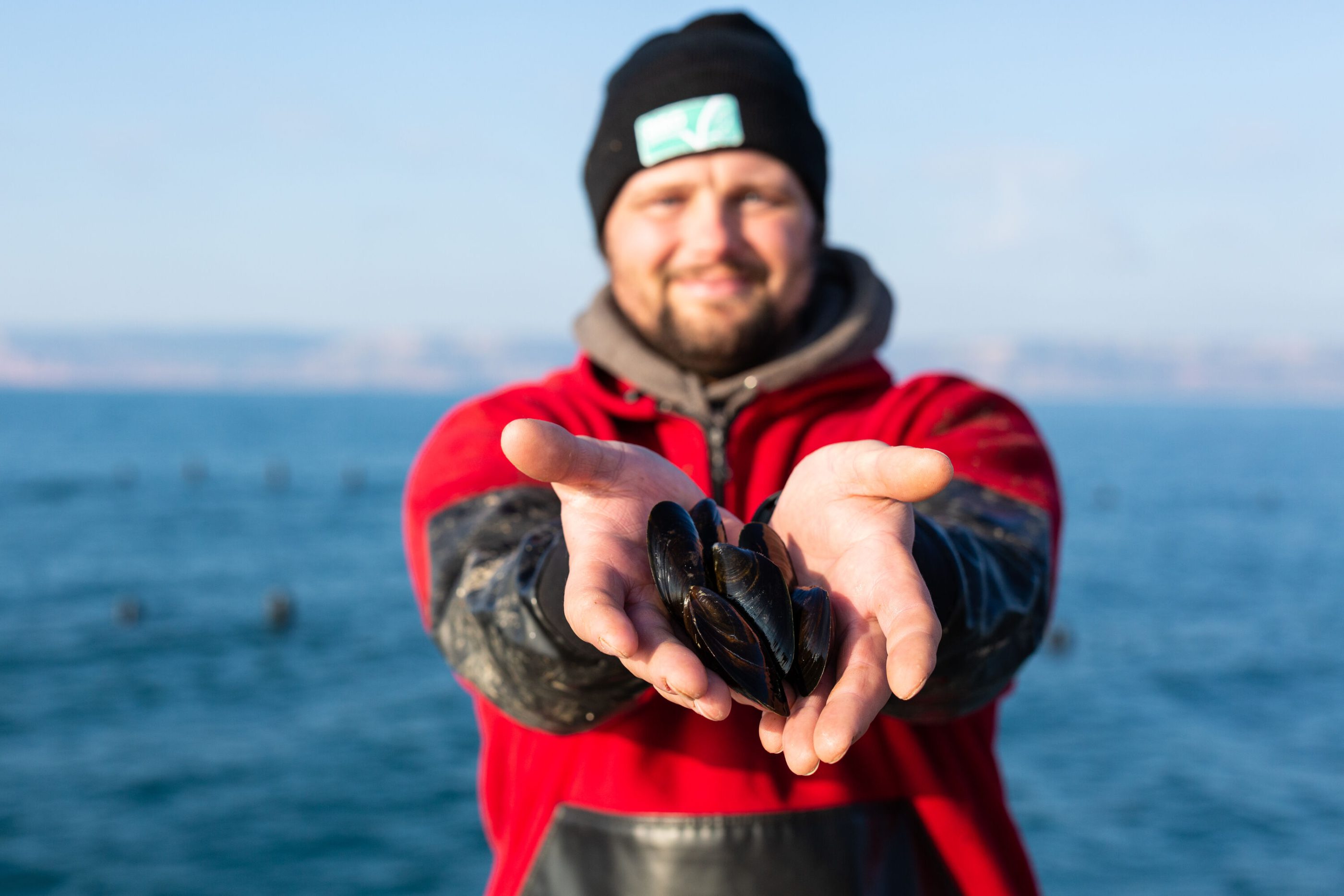
Learn more about trout
As with many fish names, ‘trout’ is quite a general term that can refer to a number of different salmonid species – that’s the same family that includes salmon, as you may have guessed.
Unsurprisingly, then, trout are closely related to salmon – so much so that the ASC Trout Standard can apply to all freshwater salmonids, while the ASC Salmon Standard can apply to all saltwater salmonids.
This makes perfect sense from a certification point of view, as it improves the efficiency of the programme which is beneficial to farmers, while maintaining the ASC’s strict requirements. But for the purposes of this article, we’ll keep things a bit more simple and just talk about one species, which is the most popular of the farmed trout species: the rainbow trout, which is named for its iridescent markings.
In the wild
But we can’t even generalise too much about this one species. The rainbow trout, which has the enjoyable Latin name oncorhynchus mykiss, can be found in two varieties: freshwater, which is self-explanatory, and anadromous – which is a fancy way of saying the fish spend time in both freshwater and seawater during their life cycle. As we’ve already seen, if the species being farmed is saltwater, it will be covered by the ASC Salmon Standard.
The anadromous rainbow trout undergo a similar life cycle to the salmon: born in freshwater mountain streams, they migrate to the ocean, and after two or three years will make the epic journey back upstream to spawn in the streams in which they were born. But we shouldn’t overlook the freshwater rainbow trout – they can also migrate long distances to reach their spawning sites.
The rainbow trout is native to the Pacific waters of North America, but since 1874 it has been introduced to waters around the northern hemisphere, as well as some warmer waters such as those around Australia, South America and Africa, where it has adapted and thrived in different conditions.
Farming trout
This adaptability has also made it a very popular – and longstanding – fish for aquaculture. The species was first farmed in the nineteenth century, though commercial farming at scale didn’t pick up until the second half of the twentieth century.
Around 850,000 tonnes of rainbow trout were farmed in 2018, representing around 2% of total aquaculture production. Being anadromous, trout is farmed in both freshwater and seawater and using a number of systems including ponds, net pens, and the more recent ‘closed’ recirculating aquaculture systems (RAS). The majority of production is freshwater, with the top producers being Iran and Turkey, but there is also significant production in Europe, Chile, and Norway.
Impacts of farming trout
Farming trout can have many of the same impacts as other fish farming, as well as others which are more specific, and they’re all covered by the ASC standard. Here is a very small selection of some of the impacts which are covered by the ASC standard…
Water quality
Although trout can be quite versatile, their welfare requires good water quality, which is also a requirement for ASC certification. Water quality gives us a good idea of whether fish have the conditions they need to not just survive but live comfortably – dissolved oxygen is an especially good indicator of this. But other indicators can also be important – not only for trout welfare, but also to ensure biodiversity of the body of water around the farm is not impacted. ASC certified trout farmers are required to measure at regular intervals various water parameters – as well as dissolved oxygen that includes phosphorus levels, and ensure that they remain within set limits. To ensure good water quality, farms must dispose of biological and non-biological waste properly.
Water use
As we’ve seen, trout farming can take many different forms, some of which – such as land-based RAS farms – will require a constant supply of fresh water. This could come from surface water, such as rivers, or groundwater, such as wells. The ASC Trout Standard includes requirements for both, ensuring that farms minimise their impacts on these important water sources.
Escapes
Escaped trout could have a number of potential impacts: they could spread disease, compete with wild fish for habitat and food, or could affect the genetic make-up of wild populations through interbreeding. ASC certified trout farms must put in place measures and effective management techniques that reduce the risk of escapes. But transparency and trust is also important, so farmers must also regularly and accurately count their fish, and if escapes do occur they must make this information publicly available. This not only helps to build trust with local communities and other stakeholders, but can also help identify trends.
Fish health
ASC certified trout farms must work hard to maintain the health of their fish. This is not just about welfare – preventing disease is also vitally important to protect nearby wild populations. For this reason comprehensive farm management plans are required, and must be regularly updated. They must cover issues including biosecurity, fish health plans, and crisis management.
Social responsibility
This one isn’t specific to trout, but it’s still really important and a mandatory part of all ASC standards. ASC certified trout farmers must operate their farms in a socially responsible manner. This means providing workers with proper health and safety training, and paying and treating them fairly. It also means being a good neighbour to any local communities, and proactively communicating with them.
Cooking with Trout
Trout is a versatile fish that can be prepared in many different ways. Try one of the suggestions below, or check out our recipes pages for even more options!
Explore More

Learn more about Seafood Farming
Find out how farmed seafood can help feed a growing global population, why fish farming needs to be done responsibly and how you can make a responsible choice.

Visit our Blog
Find out what’s behind the label, what’s going on in the world of aquaculture and how the Aquaculture Stewardship Council is updating and improving its programmes regularly.

The Aquaculture Stewardship Council
We run the world’s leading certification programme for responsibly farmed seafood. Learn about our Certification Programmes and our Impact.



